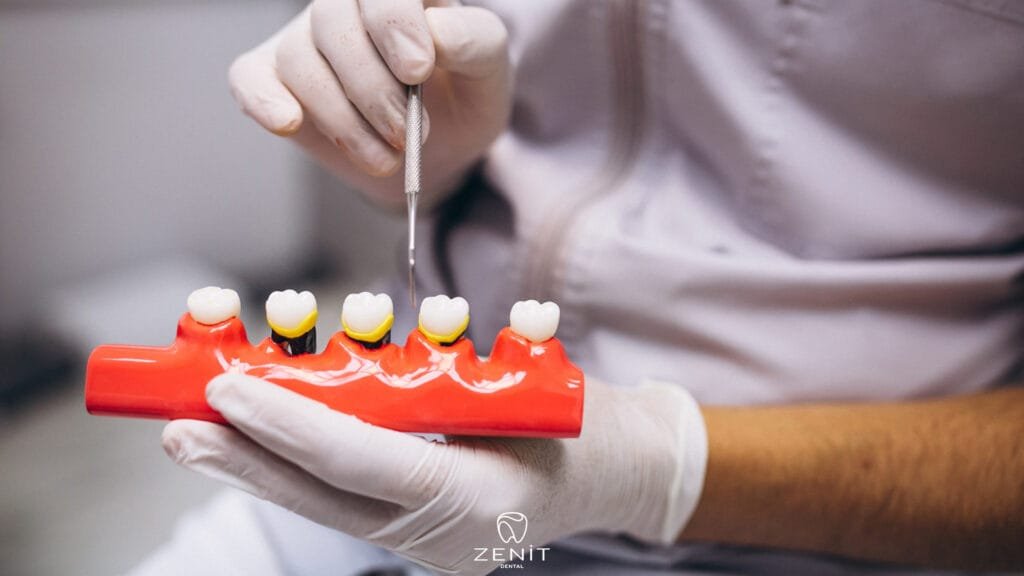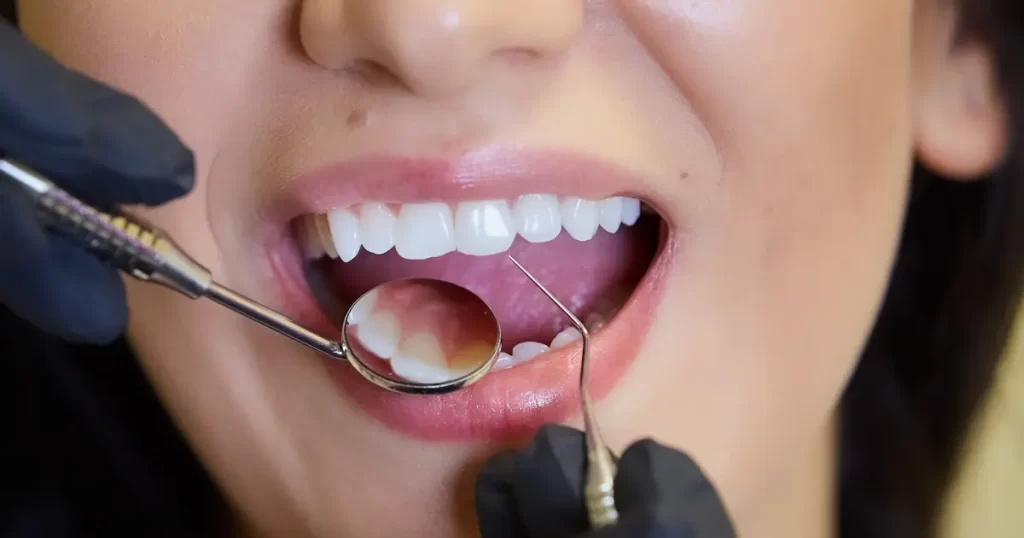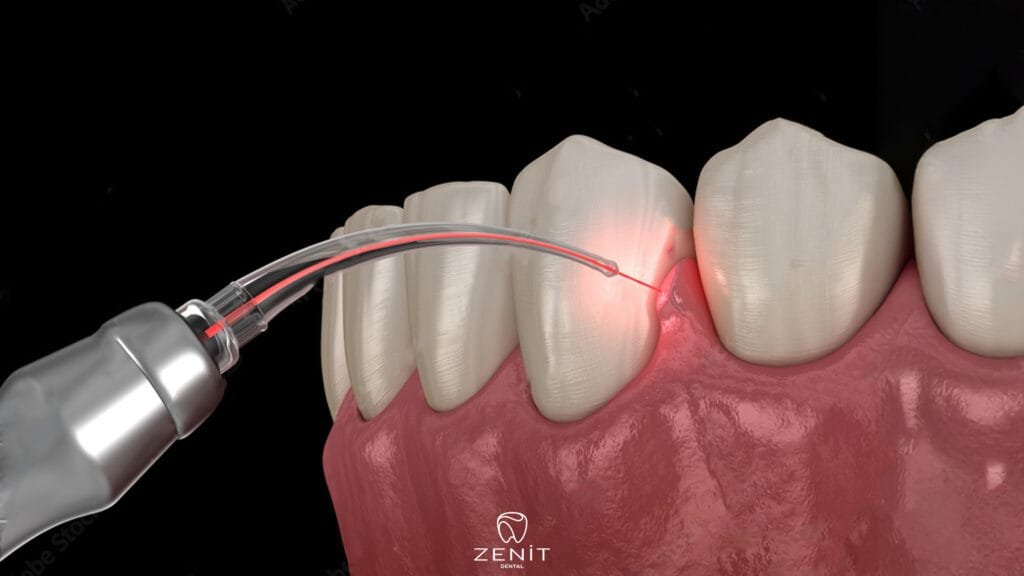Restorative Dental Treatment
Our smile plays a significant role in social interactions, and healthy, straight teeth complete this smile. However, amidst the complexities of daily life, maintaining our dental health may not always be easy. Changes in our eating habits, busy work schedules, or minor neglect in our personal care routines can gradually affect the health of our teeth. Moreover, unexpected accidents or various dental problems can accelerate this process.
Fortunately, thanks to modern dentistry techniques, dealing with such situations has become possible. Restorative dental treatment, almost like magic, restores damaged teeth to their former health. This treatment not only offers advantages from an aesthetic standpoint but also from a health perspective.
In this article, we will delve into what restorative dental treatment is, when it is sought, and the advantages it offers. Remember that the key to a healthy smile lies in regular dental care and professional treatments when necessary. Let’s take steps towards a healthy and happy smile!
What is Regenerative Dentistry?
Restorative dental treatment represents a comprehensive approach used to maintain dental health and address damages in teeth. These treatments are typically employed to resolve various dental issues such as cavities, fractures, cracks, wear, or other deformations. Essentially, restorative dental treatment focuses on restoring the natural function of teeth and recreating their aesthetic appearance.
Methods used in restorative dental treatment include fillings, crowns, bridges, implants, and other restorative procedures. These treatment options are designed to repair damage to teeth, replace missing teeth, and ensure that teeth function soundly and healthily.
For example, fillings are applied to treat cavities. Fillings halt the progression of decay by cleaning and filling the decayed area, preserving the natural structure of the tooth, and restoring chewing function. For broken or cracked teeth, crowns or veneers may be used. These methods enhance the aesthetic appearance by covering the damaged portion of the tooth and also enhance its durability.
Bridges and implants are effective treatment options used to replace missing teeth. Missing teeth can affect chewing function, alter the position of surrounding teeth, and cause aesthetic irregularities. Bridges and implants address these deficiencies by restoring balance between teeth and improving the aesthetic appearance of the smile.

Types of Restorative Dentistry
Restorative dental treatment encompasses various treatment options aimed at addressing different dental issues and is typically applied to regain dental health and restore the smile. These treatment types are used to repair damage to teeth, treat cavities, replace missing teeth, or resolve other dental problems. Here are some fundamental methods used in restorative dental treatment:
- Fillings: One of the most common restorative dental treatment methods used to treat tooth decay. Fillings restore the structure of the tooth by cleaning and filling the decayed or damaged area. Different filling materials such as amalgam (metal), composite resin (porcelain-like), or ceramic can be used.
- Root Canal Treatment: A procedure used to treat infections or damage inside the tooth. This treatment eliminates the infection by cleaning, disinfecting, and then filling the root canals of the tooth. Root canal treatment prevents tooth extraction by preserving the tooth.
- Crowns and Bridges: Restorative methods used to treat missing or damaged teeth. Crowns strengthen and provide an aesthetic appearance by covering the upper part of a damaged or decayed tooth. Bridges, on the other hand, are structures used to fill the gap left by missing teeth by attaching to neighboring teeth.
- Dental Implants: A surgical procedure used to treat permanent tooth loss. Implants function as artificial tooth roots implanted into the jawbone. They support prosthetic teeth placed on them, filling the gaps left by missing teeth and restoring chewing function.
These treatment methods offer effective and reliable options to restore dental health and aesthetic appearance. The appropriate treatment method is determined by the dentist based on the patient’s condition and needs.
Advantages of Restorative Dentistry
Restorative dental treatment offers significant improvements both aesthetically and functionally. Here are some advantages of restorative dental treatment:
- Aesthetic Appearance: Restorative dental treatment corrects dental deformities to achieve an aesthetic smile. Methods such as fillings, crowns, and dental implants preserve the natural structure of teeth, providing satisfying aesthetic results. This eliminates color disparities, cracks, chips, or other aesthetic issues, boosting self-confidence.
- Functional Gains: Restorative dental treatment restores the natural function of treated teeth, improving activities such as chewing, speaking, and smiling. Repairing fractured or damaged teeth, for example, enhances chewing function and provides a pain-free chewing experience, thereby enhancing daily quality of life.
- Preservation of Dental Health: Restorative treatments prevent the progression of damage to teeth, preserving dental health and preventing the occurrence of more serious issues such as cavities. Particularly, the application of fillings halts decay progression, maintaining tooth health. Additionally, replacing missing teeth with bridges or implants restores dental balance and preserves jawbone health.
- Long-term Solutions: When applied correctly, restorative treatments offer long-term solutions, preserving dental health for years. With the use of quality materials and regular dental care, the durability of restorative treatments increases, ensuring the long-term health of treated teeth.
These advantages underscore the importance of restorative dental treatment and demonstrate its effectiveness in addressing dental health problems and achieving a healthy smile.

To Summarize
As a result, restorative dental treatment is an important way to maintain your dental health and achieve a healthy smile. These treatments effectively treat a variety of dental problems while providing aesthetic and functional gains. However, it is important to consult with a dentist to determine appropriate treatment options in each case. Remember that regular dental check-ups and care are the key to a healthy smile.
Take steps towards a healthy smile and see a dentist today!






